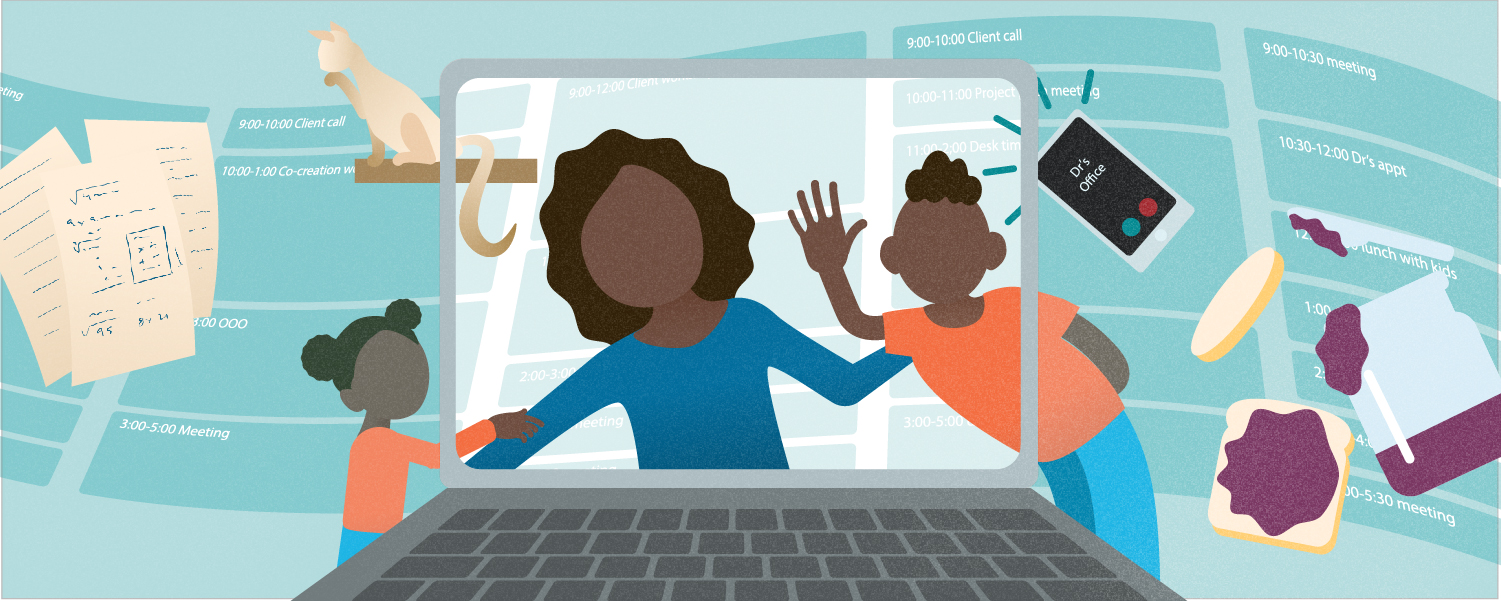
Ideas by Carly Woodward
Enabling employees to juggle home and work life during a pandemic
Work looks different; Childcare looks different; During these unpredictable times, how might organizations better support employees as they navigate work alongside home and childcare responsibilities?
Author
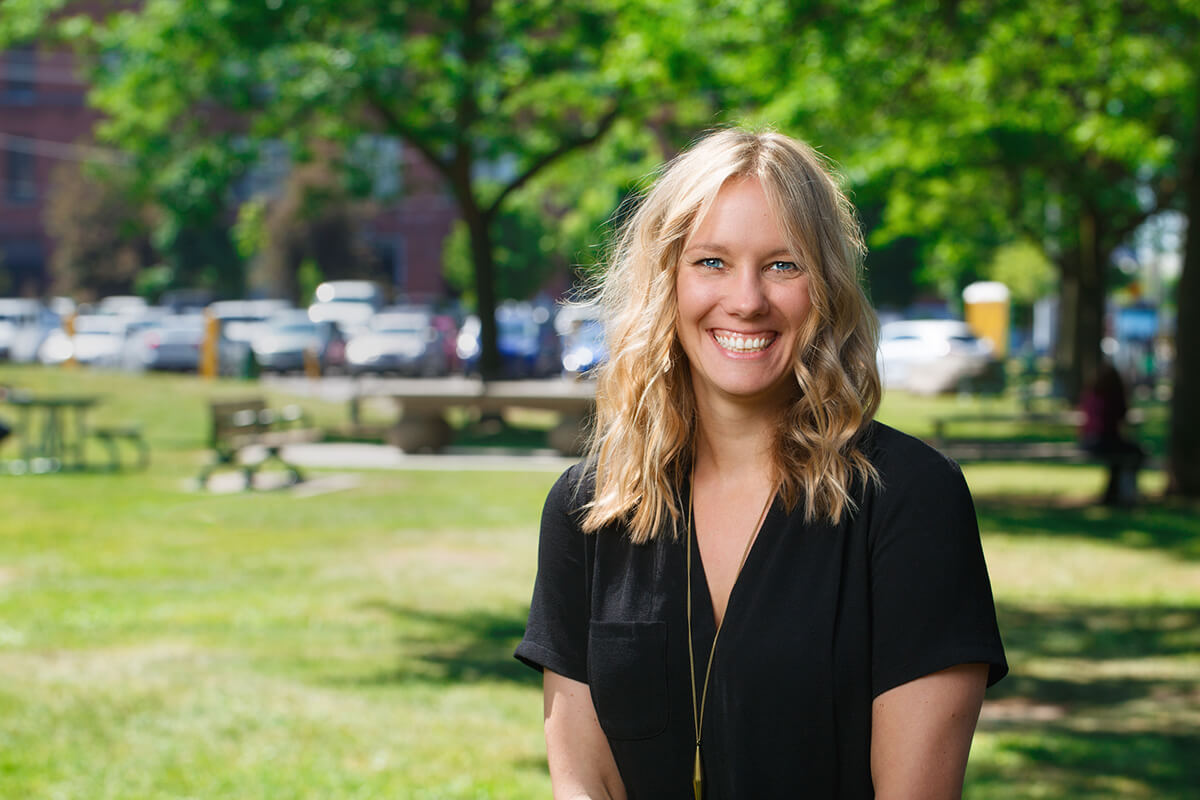
- Carly Woodward
- Director, Design Strategy
Client
- Catalyst
By Carly Woodward, Roxanne Ziman
They say home is where the heart is. However during a pandemic, home is a lot more than that. It’s the office; the gym; the playground; and as of late once again, a 24-7 childcare center and school.
While many of us are lucky to have jobs that permit us to work from home with the added flexibility to also assume full-time child rearing responsibilities, it never-the-less poses unique challenges for parents; and, in the past year since the pandemic started, has also disproportionately impacted women. Despite the progress made toward gender equality in the workforce over the last few decades, women continue to make sacrifices when it comes to their professional vocation in order to fulfill their parenting duties. Since February, 2020, 7% of working mothers in Canada (and 12% of single mothers) have dropped out of the workforce, while 45% have reduced their working hours. In the United States, women made up 43% of the workforce, but accounted for more than half of job losses this year. Without adequate support and resources, these women may not rejoin the workforce to pre-pandemic levels. Part of this is maintaining the status quo of day-to-day business operations, especially in a remote setting, and part of it is the prevailing societal expectation that women are the primary caregivers (further perpetuated by the inequality of parental leave benefits offered by companies towards women versus men). Until a vaccine is readily available to everyone, we’re likely to continue working from home well into 2021. How, then, can employers better support their employees who are navigating both work and childcare responsibilities in this unpredictable landscape?
Catalyst, a non-profit organization whose mission is to “build workplaces that work for women (which works for everyone)”, was eager to tackle this complex challenge. They partnered with Bridgeable to run a workshop on human-centred design, which is a powerful tool that can help solve problems such as this one. Together we ran a 3-day short course with participants across diverse organizations. With Bridgeable facilitating the workshop, participants were introduced to the design process and applied its methodology to understand and design solutions for how employers might better support employees as they navigate home responsibilities in this unpredictable time.
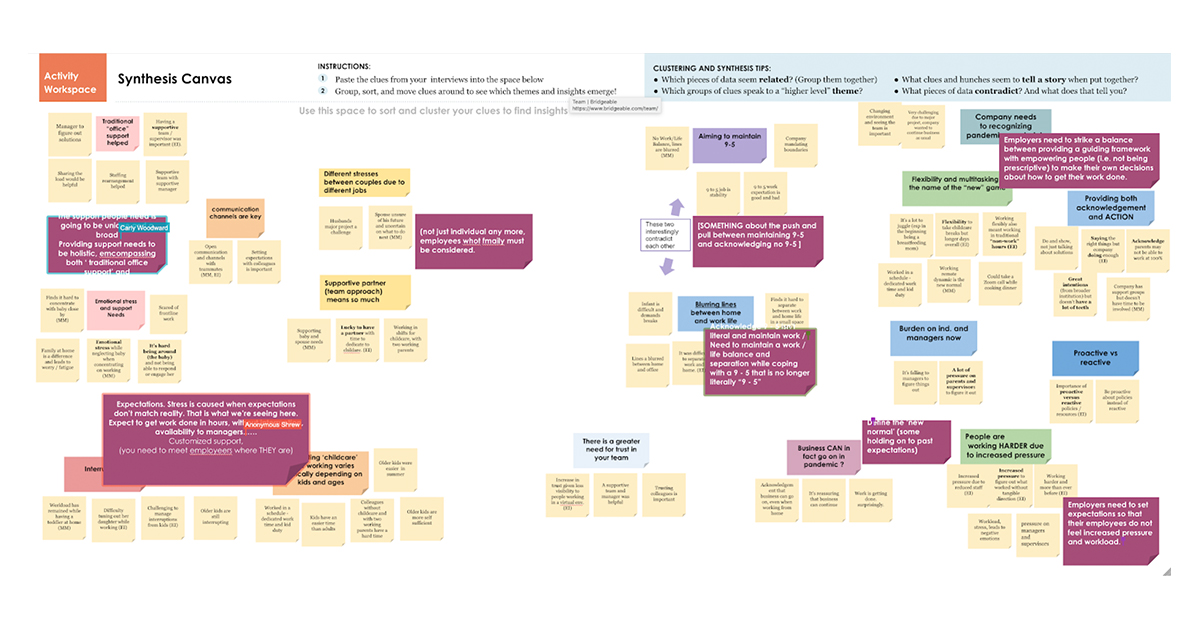
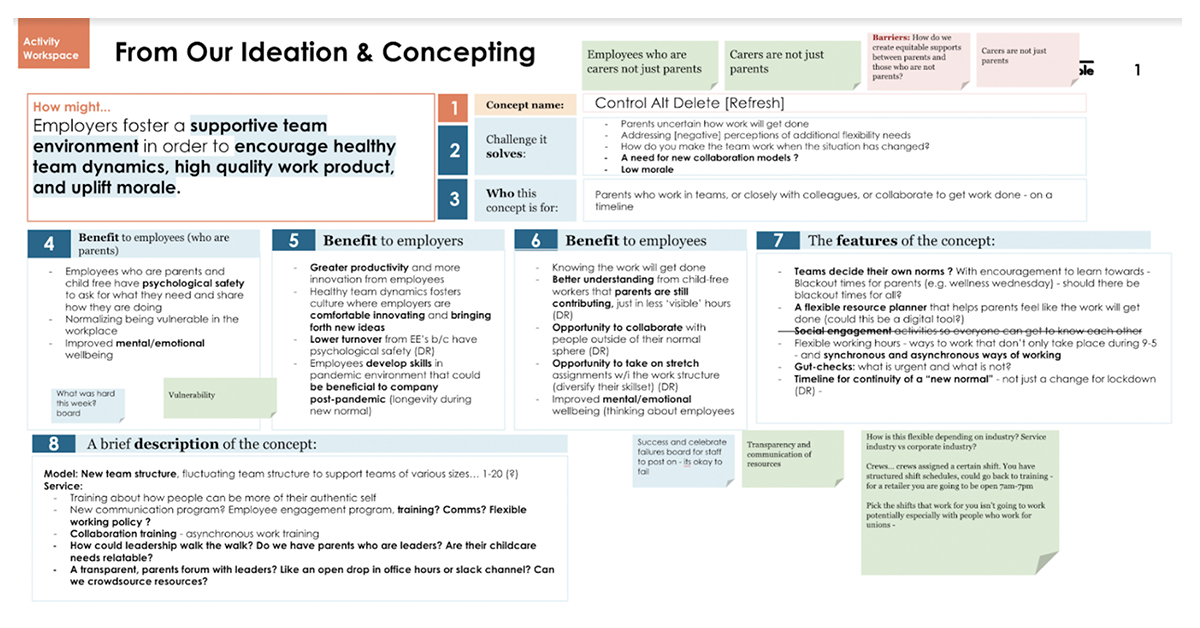
Fourteen participants worked together in small teams to practice: how to align on the problem, conduct empathy-based research through interviews, uncover insights, and rapidly prototype solutions that reflect the real experiences of working and parenting in a pandemic.
In just 3 half-days through a crash course-style workshop to see how human-centred design could help, a few interesting insights emerged:
- The pandemic has fundamentally changed the way we work, and employers need to acknowledge this. With the ability to stay connected 24-7, and with new at-home responsibilities added on, employers need to provide more “structured flexibility” to employees in how and when they work. It’s not about “respecting the 9-to-5 hours” but understanding, acknowledging, and respecting an individual’s “new 9-to-5”.
- Leadership needs to “walk the walk” when it comes to what employees need. In large institutions, the burden often falls to individual managers and parents themselves to “make it work” in this new work-from-home reality. This often leads to inconsistencies across organizations and individuals feeling unnecessarily stressed. Employers need to provide actionable guidance, policies, and support programs from the top down to create mindset changes and support structures throughout the organization.
- An employee is no longer just an individual in the workplace; employers need to be inclusive of their families and support networks, too. People’s decisions, schedules, and ways of working now incorporate a balancing act between multiple family members and their respective priorities as well. When offering support to employees, employers need to consider the holistic view of an employee’s life. Do they have a partner to help support? What is their partner’s job? What are their hours? What non-traditional caregivers may be in the picture and should be considered? Furthermore, the type of support needed is shifting, moving from solely traditional ‘in-role’ support to more broad emotional support.
We believe these are universal insights that are widely applicable, but of course, every organization has its specific context and culture to consider. Moreover, solving complex and ambiguous challenges can be especially daunting for larger organizations with thousands of employees. It’s often assumed the initial research process of gathering employee feedback can be extremely laborious. Yet participants in our workshop discovered that qualitative research, such as conducting just a dozen brief interviews, can start to generate powerful insights in a short amount of time.
Through experiencing the process of brainstorming solutions and bringing them to life as a team, participants also learned how rapid prototyping can be a powerful tool to testing and iterating solutions quickly. Agility is critical during this period when employees urgently need support in order to balance caregiving responsibilities and productivity at work. Therein lies the power of human-centered design: taking this approach allows organizations to explore the deeper insights underlying the challenge, generate and build ideas quickly, and implement and iterate solutions to ultimately drive positive change benefitting both employers and employees.
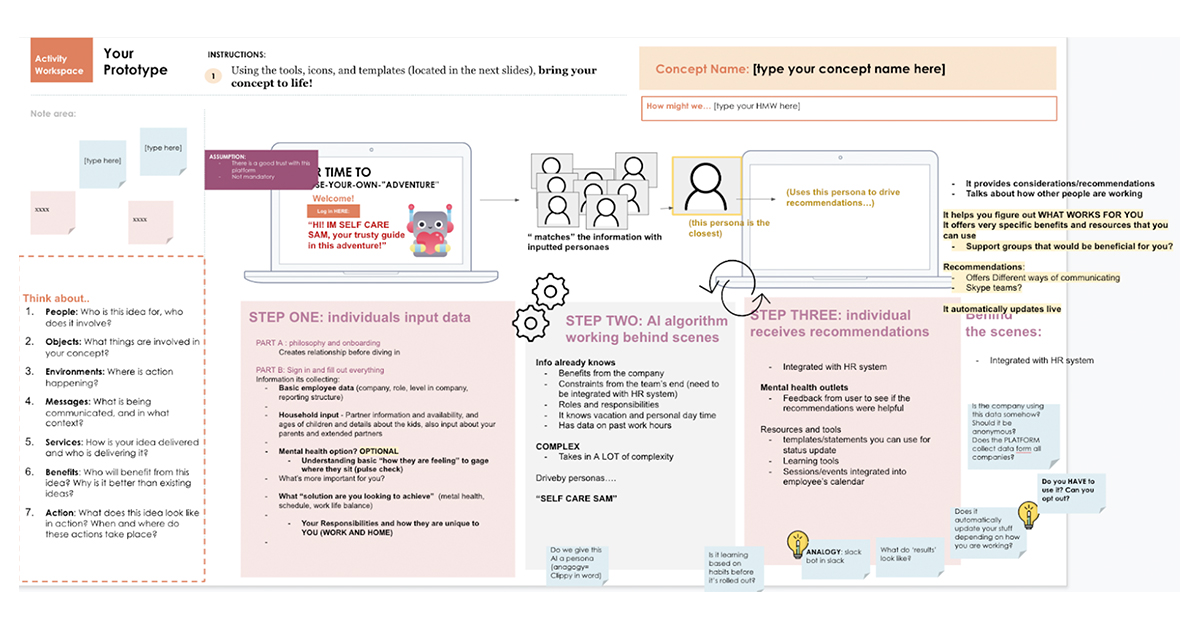
The pandemic has been a major disruptor of “business as usual” and despite the fact we are coming up to a year of working from home, organizations still struggle to keep up with the constantly evolving “new normal.” Employers need to seize this opportunity to step back and critically assess-—through using processes like human-centred design—how they can better support employees through this unpredictable time. Rather than going “back to normal”, let’s build something new, and better.
In the meantime, let’s remember and respect all the juggling happening behind the scenes (and even on screens!) in our colleagues’ lives as we navigate this new normal.
Related Ideas